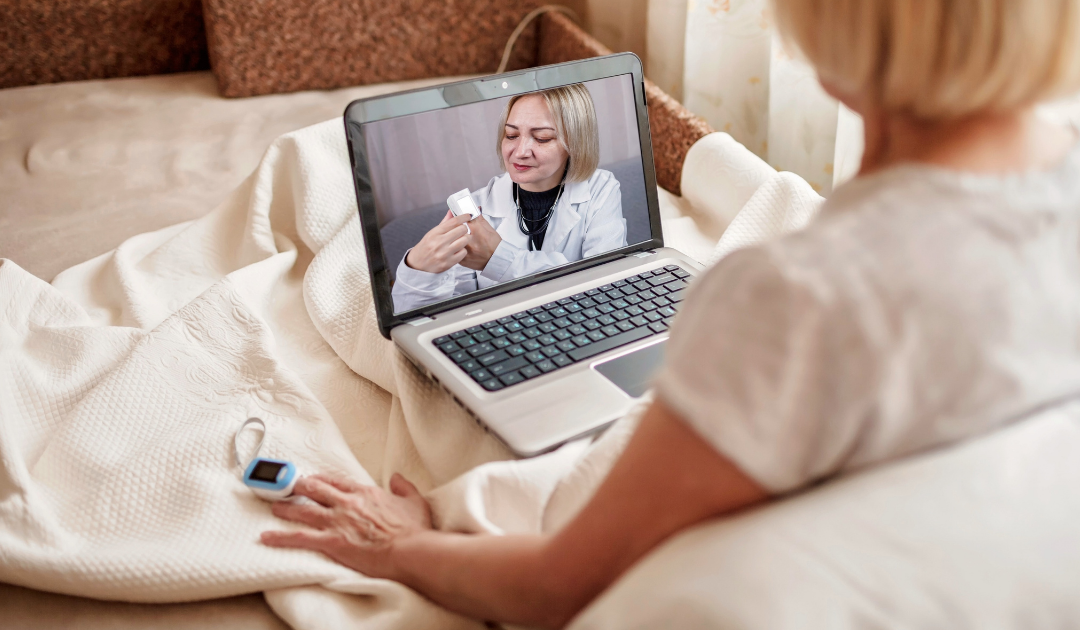Telehealth-Enabled Remote Patient Monitoring (RPM) is gaining new traction, and for good reason. During the pandemic, many hospitals have used telehealth to monitor patients remotely within the hospital. While not a classic example of traditional Remote Patient Monitoring, it has become an innovative way to keep staff safe and limit the spread of the virus.
Now that Telehealth has been widely implemented across the country, many patients have already embraced virtual care. This is the perfect time for providers to get a full-scale remote patient monitoring program in place. While most understand the role of RPM in chronic care management, there are other areas where RPM can make a meaningful impact.
Chronic disease management
According to research, RPM can reduce hospitalizations by 35% and visits to the emergency room for patients with Chronic Obstructive Pulmonary Disease or Chronic Heart Failure by 68%. The ability to constantly monitor a patient’s condition regardless of the patient’s location allows providers to intervene before complications occur. This, in turn, helps reduce hospitalizations, readmissions, and ED visits. The result is more effective chronic disease management, improved outcomes and repayment, and an enhanced patient experience.
73% of total healthcare spending goes toward managing chronic conditions. As our nation ages, RPM will play an even greater role in the healthcare continuum.
Post-operative care
Nearly 20% of patients experience some type of adverse event within the first three weeks after being discharged from a hospital or emergency department, most of which are preventable. Providers can continuously monitor and evaluate these patients during this critical period after discharge using RPM—whether in the patient’s home or at another care facility. Providers can quickly identify problematic symptoms and trends and intervene to prevent complications. This proactivity allows patients to be stable, happy, and on the road to recovery.
Two-thirds of annual ED visits—or 18 million visits—for privately insured people in the U.S. are avoidable.
Rural healthcare
Approximately 46 million Americans live in rural areas. Yet, there are just 39.8 physicians for every 100,000 of these individuals. A recent survey found that 25% of people living in rural areas say there are times they can’t get the healthcare they need. These statistics may explain why they are at greater risk of dying from heart disease, cancer, stroke, chronic lower respiratory disease, and accidental injury. RPM can expand much-needed access to care for our rural populations by removing the barriers put in place by transportation and proximity. Simultaneously, this enables health systems to expand their service area and brand recognition.
Devices for Telehealth-Enabled Remote Patient Monitoring
In addition to the broad adoption of telehealth technology, the use of wearable devices also continues to rise. Pew Research states that nearly one in five Americans now uses a fitness tracker or smartwatch. This popularity in wearable devices is a trend that is continuing to grow. Subsequently, the features of wearable devices are becoming more sophisticated, which will only increase the opportunities for RPM. Besides devices like pulse oximeters, blood pressure cuffs, glucose monitors, and EKG monitors, there are now innovative devices like sensory insoles. These insoles monitor skin temperature for diabetic foot ulcers and infections.
Wearable health monitoring devices continue to evolve. Their ability to continuously monitor multiple vitals and automatically transmit data to the provider allows for faster interventions. These wearables are key to a successful RPM program and the success of chronic disease management.
The time to act is now
Together, telehealth technology and Remote Patient Monitoring present a great opportunity to improve outcomes and truly transform the patient experience. Getting started on implementing an RPM program doesn’t require a large investment in IT or recourses. VidyoHealth can help.
VidyoHealth, powered by Andor Health, is built for end-to-end digital healthcare delivery. Our solutions help providers reach more patients across the care continuum regardless of their location. With video-enabled virtual care solutions, providers can better manage chronic disease cases with Remote Patient Monitoring, while reducing avoidable readmissions, and improving patient satisfaction. VidyoHealth provides an immersive easy-to-use telemedicine platform to support collaborative interdisciplinary care, improved patient outcomes, and lasting cost savings.

Recent Comments